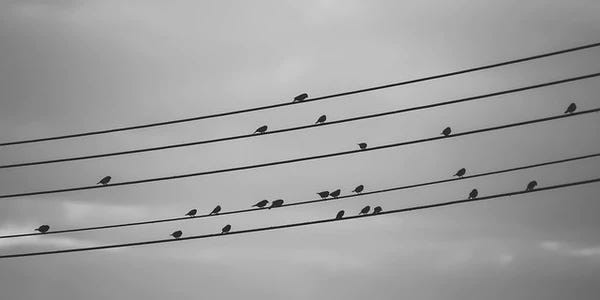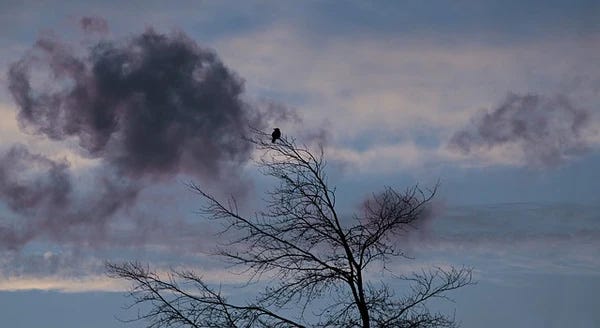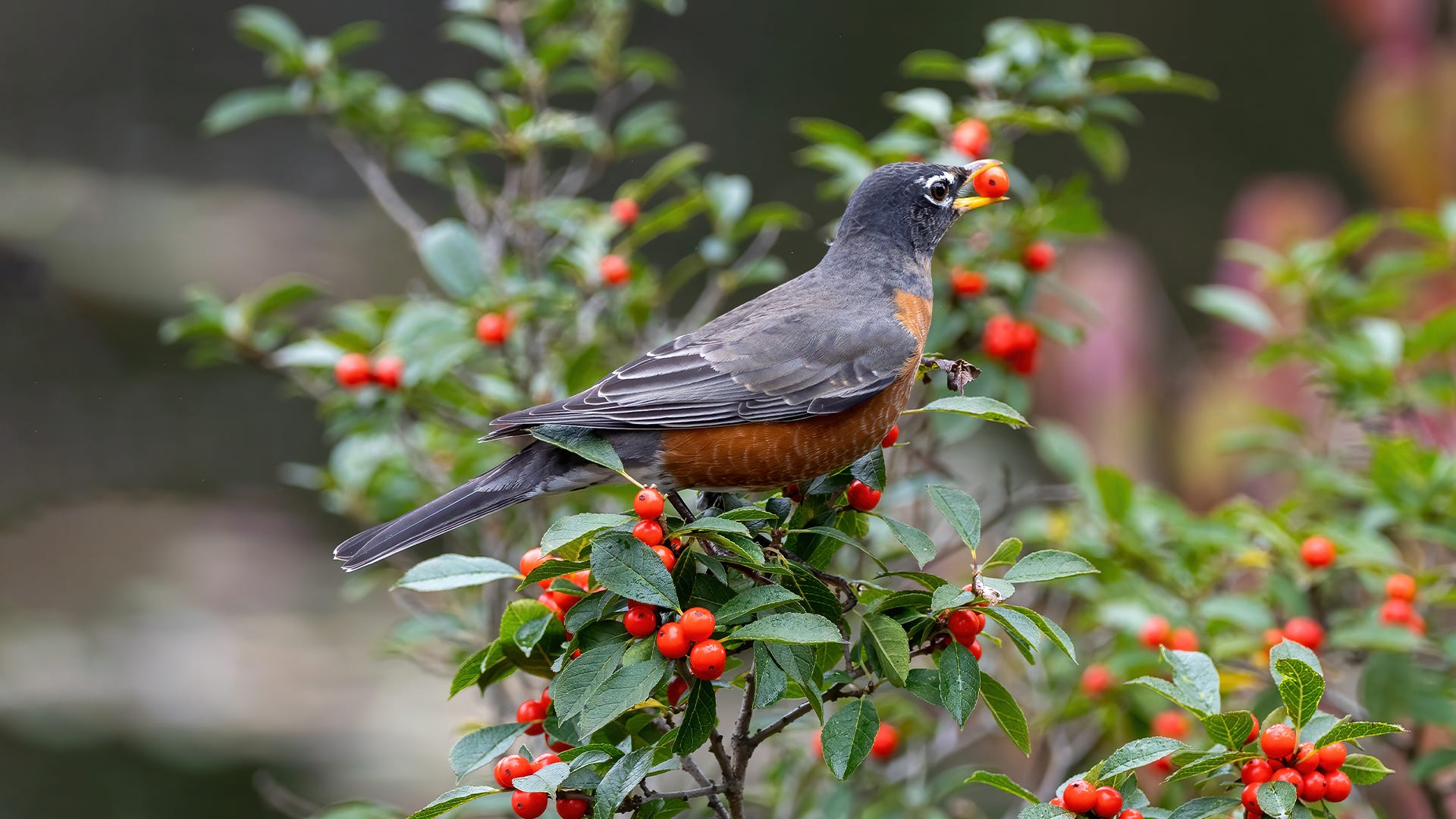
Stormy conditions wreak havoc on bird habitats, and there are many different ways storms cause problems for birds. Still, from hurricanes to hail—blizzards to dust storms, birds manage to survive these dangerous conditions. But how do they do it, and how can birders help keep birds safe from storms?
Why Storms Can Be Dangerous for Birds
Every storm is different and can have unique effects on your local birds. Storm dangers depend on climate, geography, available resources, and what types of birds are in the storm's path. Any storm, however, can be damaging, and might cause problems for birds such as:
- Knocking down active nests or flooding ground-level nests or nesting burrows
- Destroying food crops, killing prey, or otherwise disrupting food sources
- Disturbing habitat by destroying trees, changing shorelines, or flooding valleys
- Impacting bird's migration by forcing early or late travel or alternative routes
- Directly killing birds through floods, collisions with obstacles, burials, etc.
- Causing wildfires, landslides, flash floods, or other events that further hurt birds

Furthermore, severe storms can also lead to secondary catastrophes that can be deadly to birds. A hurricane, for example, might damage an offshore oil rig, causing an oil spill that could impact seabirds and coastal birds weeks after the storm has passed. A tornado might damage a power line, leading to a wildfire that wipes out grassland habitat many miles from the original storm.
See also: How to Feed Birds During WinterHow Birds Survive Harsh Storms
Despite all the potential negative impacts of storms, birds do manage to survive bad weather. They have many adaptations that give them strong advantages to stay safe in any type of storm:
Sense the Storm
Birds have keen senses and are aware of the tiniest environmental changes that indicate a coming storm. Birds can sense shifts in temperature, wind speed, wind direction, humidity, and barometric pressure. When those shifts indicate a storm, the birds are able to take early action to stay safe.

Eat Up
Many birds will feed frantically in the hours before a storm hits, fueling up to survive its duration. They may use that nutritious fuel to leave the area, or to stay warm when the temperature drops. Birds need enough energy until the storm passes and they can return to their normal feeding pattern.
See also: 5 Ways to Protect Bird Feeders from RainstormsSeek Shelter
When bad weather begins, birds will quickly seek shelter to stay away from the worst of its effects. Because many birds are so tiny, even tucking against the trunk of a tree can be good shelter from the worst wind, driving rain, or stinging snow. Birds will seek out hidden cavities or nestle under branches, brush, or other shelter to keep out of bad weather.
Get Out of the Way
Some bird species will leave the area if poor weather approaches, and because birds don't need to follow roads or other predetermined paths, they can quickly get far from the worst weather. Even just a few miles of distance can make a tremendous difference in how severe a storm may be, and birds can easily get out of the way of the very worst storms.

Hang On
Birds buffeted by strong winds may seem like they're clutching a branch or wire for dear life, but holding on is easy for birds. Their natural resting position is to have their talons closed and locked, and their feet will only release if the bird uses its muscles. This gives birds a powerful grip to hold on to a perch, even in the strongest winds.
Minimize Exposure
Birds will instinctively hunker down during poor weather, tucking their bills into their feathers, crouching low, and otherwise minimizing their exposure to dangerous conditions. This can help them keep from getting waterlogged or feeling too much blowing wind. It can keep them warm and relatively dry, even in poor weather.

Keep Warm
Many birds have many physical adaptations to keep warm even during sudden cold snaps or freezing ice storms and blizzards—from insulating downy feathers to a layer of stored fat that minimizes heat loss. Some birds grow thicker winter plumage. Others even lower their body temperature and metabolism to stay warm, safe, and snug.
Despite these survival strategies and adaptations, however, storms can still be deadly to birds, and many wild birds die during severe weather. Storms that impact nesting areas are especially devastating, as birds may not be able to re-nest during the same season. This can lead to dramatically diminished breeding success.
How to Help Birds Survive Storms
There are many easy steps birders can take to help birds survive storms, whether it is a single afternoon thunderstorm, a lengthy blizzard, or a dangerous hurricane:
- Provide healthy food at backyard feeders so birds have a reliable, nutritious food source not only before the storm, but all year long. The stronger and healthier birds are, the more resilient they will be to the negative impacts of extreme weather.
- Create sturdy shelter by providing good bird houses and roost boxes that are protected from driving rain, prevailing winds, or accumulating snow. Adding native evergreen plants to the yard and building a brush pile are other ways to provide shelter for even more birds.
- Support local nature preserves and wildlife refuges so birds have plenty of available habitat to seek shelter in if bad weather threatens. The more bird-friendly a region is, the safer it will be for all birds, even during stormy conditions.

- After a storm passes, look for injured birds and getting them to a licensed wildlife rehabilitator as soon as possible. Consider offering financial or material donations to rehabbers so they can continue their critical work with all sick or injured birds.
- Participate in habitat cleanups after bad storms to help restore the area as quickly as possible so it is available to birds. Local nature centers, wildlife preserves, and refuges will have volunteer opportunities after severe storms to help reclaim damaged areas.
While birds are impressively well-adapted to survive storms, severe weather can still be dangerous. Birders who understand our feathered friends' adaptations will be better prepared to help them rebound quickly after severe storms of any kind.







